Adjacent to An Teampall Mór is the remains of an early 11th century church which is known as the Abbey. It would have been the largest building to be found on the site of a monastery founded by St. Moling 400 years earlier. It started of as a simple chancel church which was later added to over the next few centuries. A rectangular structure with only the North wall still intact and parts of the south and east walls surviving.
The original structure was divided by a chancel arch, The chancel was slightly narrower than the nave which was added later. There was an Ogee-headed window in the north wall of nave. The south wall in the west corner still shows signs of a broken spiral stairs which would have led to an upper level. This was adjacent to a Round tower built in the 11th century, which once stood beside the Abbey and looks to have been attached at one stage. It is believed that the door to the round tower faced the door to the chancel.
Beginning the construction of the Abbey in the 15th century involved raising and thickening the existing church walls, to provide an additional storey overhead. A barrel vaulted ceiling was used to give a strong support to the upper level. There are fine examples of these which can be seen at Oughterard and Oughavel to mention just a few. access to the upper floor which would have been used as sleeping quarters for the monks was via an intramural staircase or the Night Stairs, as it was known.
The structure used a hammer beam roof and was probably used as a refectory or library. The West gable wall was light by a gothic trefoil or trinity window. The monastery was suppressed sometime between 1536 & 1539 which led to the lands and buildings being granted to the Kavanagh family. Oddly enough the Kavanagh name was adopted by descendants of Diarmuid Mac Murchadha whom was King of Leinster and was the treacherous fool responsible for the Norman invasion of Ireland. So the Abbey was converted by the Kavanagh’s for use as a private dwelling although the kept the chapel for use in religious services. The western part of the Abbey underwent major alterations to accommodate its new purpose. A large fire place was installed where the original 11th century entrance had been. Corbels were added into the walls to support a new timber floor.
In around 1738 a fire destroyed much of the Abbey and there is little reference to it after this date. During the fire the west wall and cloister is believed to have collapsed. All that remains now are the ruins of what was once a remarkable building. You can still see the stone alter and a number of underground rooms which were most likely storage cellars. Perhaps for the monks to keep their wine in?
To see more of these images, why not visit my Website or join me on Facebook or Twitter.




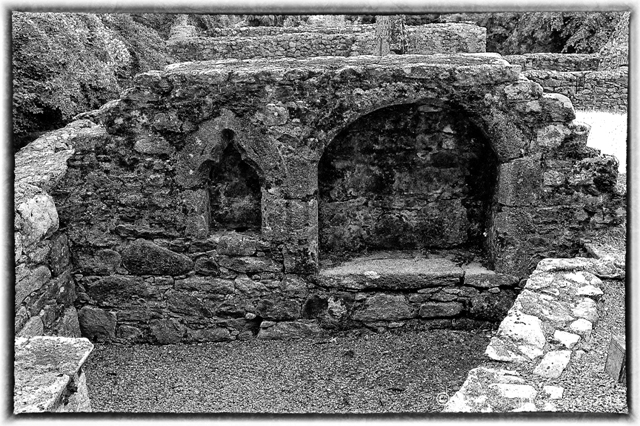
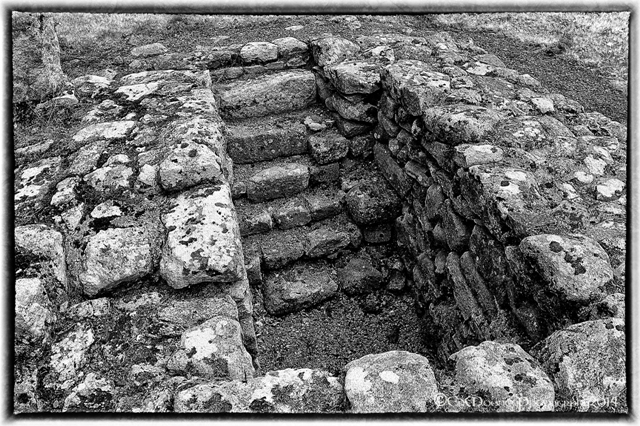
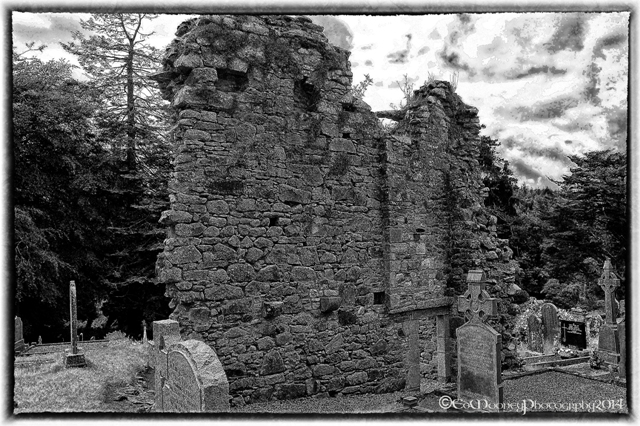
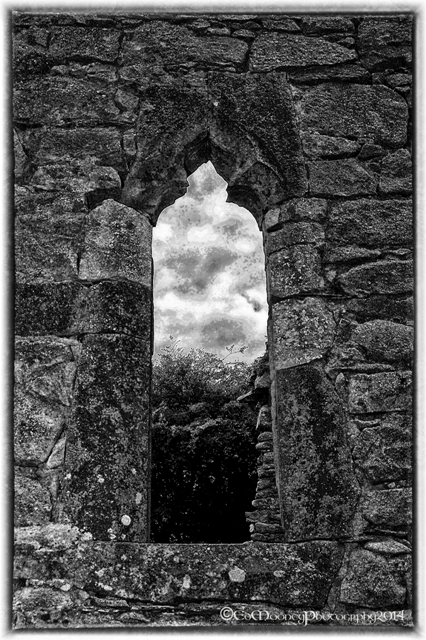
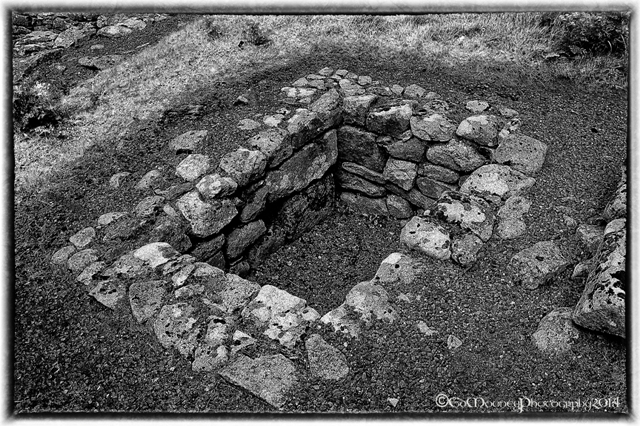



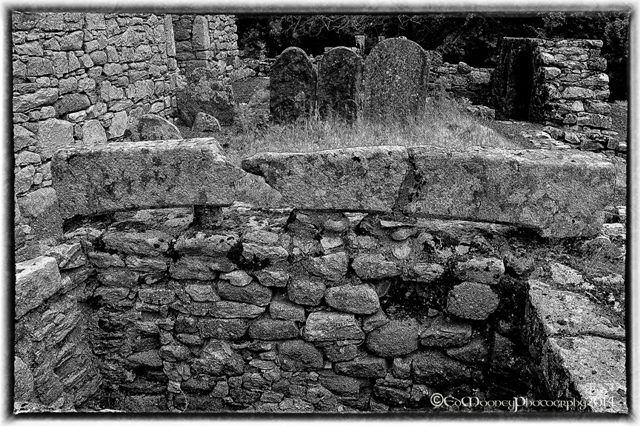
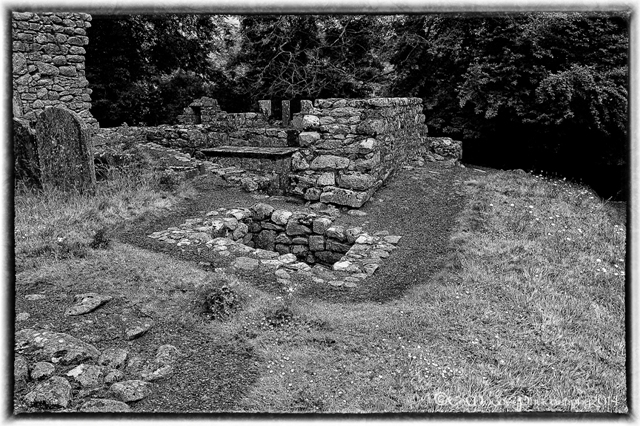











Oh, look at all that beautiful texture in the stones!
LikeLike
They are quite nice,Thank you 🙂
LikeLike
Pingback: St. Mullins Ecclesiastical site | EdMooneyPhotography
beautiful photos… thanks eve
LikeLike
Thank you Eve, so glad you liked them 🙂
LikeLike
Ed, you certainly have your monochrome skills down to a science. Was the establishing shot cropped or a pieced together panorama? Nice work!
LikeLike
Thanks Robert, that’s a big compliment coming from you. As they say, practise makes perfect. It was a panorama, five shots stitched together. I hate doing them because they don’t always work out, but I didn’t have a wide enough lense to fit the entire scene in one shot.
LikeLike
Wonderful and I too love the panorama!! It all gives me the shivers. And again I love your histories of the sites!!
LikeLike
Thank you Cybele, if only this bloody rain would go away, I could be out doing more 😦
LikeLike
Fascinating!
There is a new scheme starting up in Britain on Church Grafitti – the older the better. Here is a link: http://www.medieval-graffiti-suffolk.co.uk/
I aim to have a look locally. Might add another dimension to your interests – but not, hopefully, to the work you already put in with this!
m
LikeLike
Thank you Michael, I will have a good look through it. Much of the grafitti I come across is modern which I tend to spend hours removing digitally. Thanks for the link 🙂
LikeLike
Such beautiful photos and history. Always amazed by your work!
LikeLike
Thank you John, much appreciated 🙂
LikeLike
A great series of photographs Ed . you processing adds real atmosphere
LikeLike
Thank you Glynn, hopefully the weather will pick up and I can get out to take some more 🙂
LikeLike
Such beautiful, evocative shots. The black & white treatment really brings out the bones of the structures. And what stories they are still anxious to tell!
LikeLike
Thank you Karen, so glad you enjoyed them 🙂
LikeLike
You definitely set a mood! Amazing to even imagine being in those times.
LikeLike
Thanks Laura, thats one of the joys of spending time exploring these places. For a moment its like you get to travel back in time 🙂
LikeLike
You’re welcome. I’m glad I live in these times as I need my flat iron lol.
LikeLike
🙂
LikeLike
Pingback: The Stump | EdMooneyPhotography
Pingback: St. James Cell | EdMooneyPhotography
What a structure. I loved the spiral stairs.
LikeLike
Thank you for liking “Rock Art: Part 1.” I admire the amazing detail of these photos and the interesting angles of these shots. I also appreciate the background information that you provide in your posts. Well done! 🙂
LikeLike
Pingback: The Bath | EdMooneyPhotography
Reblogged this on chewmoney and commented:
very educational
LikeLike
Gorgeous photography …Thankyou for new creative inspiration !
LikeLiked by 1 person
Thank you so much, glad you enjoyed it 🙂
LikeLike
Thank you for visiting my blog “A Picture a Day”. Much appreciated. Your work is completely different from mine, but I enjoy looking at it.
LikeLiked by 1 person
I enjoyed the b&w atmospheric photos of the abbey, ruins are a great subject for b&w. Are you using film or digital? I used to enjoy processing my own b&w film but then I discovered I enjoyed making objects and took photographs purely for inspiration for making. Happy snapping and thank you for dropping by on my site. I look forward to your posts.
LikeLiked by 1 person
Thanks Veronica, I only got into photography a few years ago so I missed out on film. Its something I would love to learn. One of the old guys in my camera club is a staunch film user, he does things in the darkroom that I would struggle with in Photoshop. 🙂
LikeLike
Reblogged this on MUSE-AHOLIC.
LikeLike